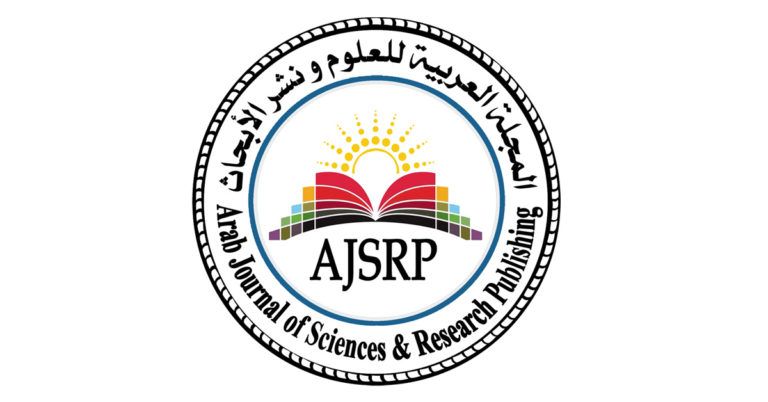The basic information determines the history and nature of a specific research problem and describes it well based on previous literature. This information should indicate the roots and scope of the problem studied and the extent to which previous studies have succeeded in investigating it. With the need to indicate gaps that were not addressed in previous studies, and the current research will try to address them, and this information differs from the theoretical framework as it places the research problem in an appropriate context instead of a close examination of previous literature.
The basic information of the introduction method:
The provision of basic information is considered a bridge that links the reader to the subject of your study, but the length and height of this bridge depends on the amount of information that the researcher believes that the reader will need in order to understand the research problem that is being investigated and estimate the importance of the study and its aspects.
From another perspective, the length of this information and its details also depend on the degree of the researcher’s understanding of the topic and to what degree he wants to show this understanding of his teacher, this point must be taken into account because providing concise basic information can be an effective way to demonstrate a deep understanding of the fundamental issues and concepts that arise She has to study the researcher, (Don’t try to pretend!)
Since the formulation and style of your basic information can vary depending on the complexity and nature of the research, here are some questions to consider while writing:
- Are there concepts, terms, theories or ideas that are potentially unfamiliar to the reader, which requires additional explanation?
- Are there historical elements that need to be explored and clarified, or is there a need to shed light on specific people, or specific issues, in order to put information in the appropriate context and build a basis for understanding the problem and the reasons for its emergence?
- Is the research study unusual enough to require additional explanation? For example:
- Does the study use a methodology not previously applied to the research problem studied?
- Is the problem of study very complicated?
- Does the study rely on analyzing unique texts or documents, such as archival materials or raw documents?
Notes:
- Background information may also include summaries of relevant, relevant research studies.
- The secret is to summarize what is known about the specific research problem before analyzing the data. This is achieved through a general review of previous literature (with documentation) that reports on the results that guide the researcher in refining the goals and objectives of his study.
- The research studies you cited as part of the background to your introduction should not include very long, specific explanations. Because discussing it in detail is in the chapter of the theoretical framework (or literature review).
Why do we write the introduction to scientific research?
The introduction to the research is the part that aims to guide the reader from the general research topic to the specific areas of research, by defining the context of the research that is being worked on and summarizing the basic information about it and giving a preliminary understanding about the topic, in addition to clarifying the goal of the study in the form of a hypothesis, question or research problem , Which in turn summarizes the researcher’s logic, i.e. clarify his view and motives for conducting the study, and the introduction also highlights the possible results that the study will reveal later.
The importance of a good introduction:
Simply put, the importance of a good introduction lies in the fact that it provides an unrepeatable opportunity to make the first impression of the study, which will be a good impression if the introduction is written in a sound academic manner, as it provides a stimulating initial impression of the researcher’s point of view, logic, and his style of writing, and also gives a glance About the overall quality of the study, the quality and validity of the findings and conclusions.
But if the introduction is vague, disorganized, or full of errors, it will surely give a negative impression of the entire research, while a brief, attractive, and well-written introduction will make the reader think about the researcher’s analytical skills, the quality of his written style, and the approach he follows.
To write a good introduction, you need to think of the introduction as a mental map. You must answer four questions for the reader:
- Is this subject related to my studies?
- Why was this particular topic chosen for study?
- Do I have a background in the study topic?
- How will this study support my knowledge?
Introduction writing style:
First: the writing methodology, and its structure.
Think of the structure of the introduction as an inverted triangle in which the information resides, organize the most general information in the base of the triangle that represents the beginning of the introduction, then start allocating information and identifying aspects of the research, until you reach the top of the triangle, i.e. in other words, arrange your ideas from general to special, so that The end of the introduction is the justification for your research, and you may also write the possible results of your study at the end of the introduction.
These are the general stages associated with writing the introduction:
First: Create a search context by:
- Highlighting the importance of the topic.
- Make general statements about the topic.
- Provide an overview of other research on this topic.
Second: Determining the value of the research through:
- Opposing previous assumptions (assumptions of other studies) on the same topic that you will study.
- Detecting previous studies gaps, if there is a gap already.
- Formulate a research question or problem.
- Adherence to the strict norms of scientific research.
Third: Put your search in the correct position by:
- Indicate your intention and goals of the research.
- Determine the main characteristics of your study.
- Describe important potential outcomes.
- Give an overview of your study methodology and structure.
* Although the introduction is the first major section of the research paper, it is often good to write it very late, that is, after the completion of the study, so that the introduction is identical to what is present in the body of the study and its structure, from reports and results, and others. .
Second: study planning.
The concept of study planning refers to those characteristics that define the field of study, and defines its conceptual limits, and this is determined by informed decisions about excluding or including information about addressing the research problem, these decisions are made during the investigation of the research problem. In other words, you should not tell the reader what you are studying and why,
but you must also acknowledge why you rejected the alternative methods that could have been used to study the research problem, and this is exactly what you have to mention at the end of the introduction (i.e. write the reason that prompted you to use a particular method instead of a method Another may be appropriate for your studies).
Narrative flowchart (smooth writing flow):
There are some problems to consider, as they may help you write the introduction smoothly, and for some tips to avoid them, here are:
- The introduction should clearly identify the researcher’s focus.
This will help focus the introduction on the subject of the study appropriately, ensuring that the essence of the study is quickly accessed without losing focus or being distracted by very general information.
- Providing a brief, balanced review of previous relevant literature may help you create a clear context for your study .
The idea is to summarize to the reader what is known about the specific research problem before conducting your own analysis, that is, to give it background on the topic, and this part of the introduction should not represent a comprehensive review of the previous literature, only a general review, and it is worth noting that it is mandatory to document previous literature that you may use .
- I clearly state the hypothesis based on it.
- Why did you choose this kind of research and methodological study?
Provide a clear statement of why you choose this type of study, and explain why you use the method you will choose, usually this paragraph at the end of the introduction.

Engage the reader in the introduction:
The primary goal of the introduction is to make readers want to read more about your studies, and the introduction must gain their attention, and this can be done through one of these strategies:
- Start the intro with a short story or incident.
- Start the intro with an impressive quotation, live incident, and perhaps a shocking one.
- Ask a provocative or thought-provoking question.
- Writing a bewildering or inconsistent scenario, drawing the reader to know the mystery.
- Give an interesting example or case study that explains why the research problem is so important.
* Note: Choose only one reader engagement strategy.
References:
- Key Elements of the Research Proposal. Prepared under the direction of the Superintendent and by the 2010 Curriculum Design and Writing Team. Baltimore County Public Schools.
- The Writing Center. University of North Carolina.
- Freedman, Leora and Jerry Plotnick. Introductions and Conclusions. University College Writing Center. University of Toronto; Introduction. The Structure, Format, Content, and Style of a Journal-Style Scientific Paper. Department of Biology. Bates College; Introductions. The Writing Center. University of North Carolina; Introductions. The Writer’s Handbook. Writing Center. University of Wisconsin, Madison; Introductions, Body Paragraphs, and Conclusions for an Argument Paper. The Writing Lab and The OWL. Purdue University; Resources for writers: introduction strategies. Program in Writing and Humanistic Studies. Massachusetts Institute of Technology; Sharpling, Gerald. Writing an Introduction. Center for Applied Linguistics, University of Warwick; Writing Your Introduction. Department of English Writing Guide. George Mason University.













